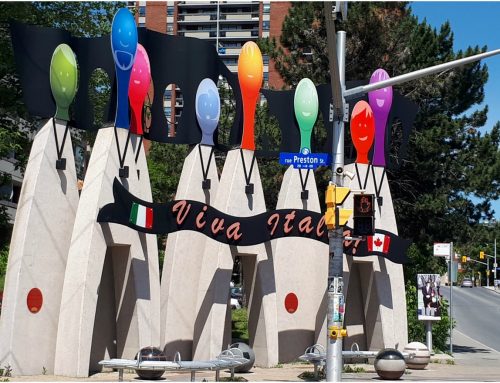For almost two centuries, Europeans merely passed through these Algonquin lands. It was not until 1800 that Philemon Wright, of Woburn, Massachusetts, built a home for himself at the foot of the portage, on the Québec side of the river. The town he founded, originally called Wrightville, was renamed Hull and became, more recently, the centre of the city of Gatineau. A significant amount of time passed before any of the European travelers found it worthwhile to settle on the heights of the great cliffs on the south side of the river. Around 1820, Nicholas Sparks moved across the river and cleared a farm in what is now the heart of Ottawa.”
– Robert Vineberg, The Role of Immigration in Ottawa’s Historic Growth and Development
The story of Ottawa’s immigrants begins slowly, with a family here, a village here. Hundreds arrived from distant lands to build a canal, and then “the south side of the river” became a rough lumber town, which became a staid seat of government and is now one of the world’s most elegant capital cities. That early trickle of immigrants has risen to an annual average of 12,000 arrivals in recent years.
As Vineberg noted, the land we now call Ottawa was the territory of the Algonquin People for centuries before any European explorers arrived. Even though that land was never formally ceded to the new arrivals, the settlements started by Wright and Sparks continued to grow and centuries later, the Ontario government is negotiating an important land claim agreement with the Algonquins of Ontario).
In 1827 the European population grew substantially as thousands of Scottish workers were brought in with Col. John By to build the Rideau Canal. (The image above is from that era, Entrance of the Rideau Canal, Bytown, Upper Canada (Ottawa), by Henry Francis Ainslie.) French and Irish immigrants soon followed, drawn to jobs in the town’s lumber trade. When Queen Victoria declared Ottawa the capital for the Dominion of Canada in 1858, it sparked a new wave of migrants from many parts of Europe, eager to work in the nation’s capital.
Ottawa’s population growth remained steady throughout the early 20th century, with waves of newcomers arriving from England, Italy, Hungary, India and Pakistan, the Caribbean, the Middle East and Vietnam, followed more recently by waves of people from China, the Philippines, Somalia, Sudan and Central Africa. The recent trends in immigration patterns have led to the most dramatic shift in Ottawa’s ethnic makeup: in the 10 years from 1996- 2006, the proportion of “visible minorities” in Ottawa jumped from 14.5% to 19.4%.
If you’d like to know more about Ottawa’s immigration history, Vineberg’s 2010 report for OLIP is a good place to start. It offers a general overview and also compares the capital’s immigration patterns to those of other Canadian cities. The Ottawa Historical Society has links and stories about Ottawa’s early days, as does the Bytown Museum. you can find resources on some of Ottawa’s communities online as well, including information on our earliest Jewish residents online, a description of Ottawa’s embrace of Vietnamese refugees in the 1970s, links and resources from Black History Ottawa and much more.
Hundreds of thousands of migrants have made Ottawa their home over the years. Tens of thousands more have passed through this land without putting down roots, or decided against moving here in the first place, or considering Ottawa among other choices for where in the world they might go.
Welcoming Ottawa Week is for those who are already here and those not yet here. WOW is about ensuring that we continue to attract the best and brightest to our vibrant city because every resident, whether born here or not, can build a successful life within our diverse community.






